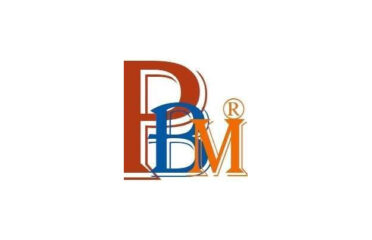What is Small Claims Court Law in Canada?
Small Claims Court provides Canadians with an accessible, cost-effective way to resolve civil disputes without the complexity and expense of higher courts. Handling over 150,000 cases annually nationwide, these courts empower individuals and small businesses to seek justice for minor grievances. This guide explains how Small Claims Court works across Canada, including claim limits, procedures, and practical tips for navigating the system successfully.
1. What is Small Claims Court?
Small Claims Court is a simplified civil court designed for:
-
Lower-value disputes (amount limits vary by province)
-
Faster resolutions (typically 3-8 months)
-
Less formal procedures (no strict evidence rules)
-
Self-representation (lawyers optional in most cases)
Key Principle: “Accessible justice” – designed for ordinary citizens, not just legal professionals.
2. Provincial Variations at a Glance
| Province | Maximum Claim | Time Limit | Lawyer Representation |
|---|---|---|---|
| Ontario | $35,000 | 2 years | Restricted |
| British Columbia | $35,000 | 2 years | Allowed |
| Alberta | $50,000 | 2 years | Allowed |
| Quebec | $15,000 | 3 years | Not allowed |
| Nova Scotia | $25,000 | 6 years | Allowed |
Note: Territories have limits between $25,000-$35,000.
3. Common Small Claims Cases
A. Consumer Disputes (35% of claims)
-
Faulty goods/services
-
Breach of contract
-
Unpaid invoices
B. Tenant/Landlord Issues (25%)
-
Security deposit disputes
-
Property damage claims
-
Illegal rent increases
C. Personal Injury (15%)
-
Minor accident claims
-
Dog bites
-
Slip-and-fall incidents
D. Employment Matters (10%)
-
Unpaid wages
-
Wrongful dismissal (below claim limit)
-
Independent contractor disputes
E. Other Claims
-
Neighbor disputes (fences, trees)
-
Loan repayments
-
Defamation (libel/slander)
4. The Claims Process Step-by-Step
A. Before Filing
-
Send Demand Letter (30-day notice often required)
-
Gather Evidence (contracts, photos, receipts)
-
Attempt Mediation (mandatory in some provinces)
B. Filing the Claim
-
Complete Forms (province-specific)
-
Plaintiff/defendant details
-
Claim amount + justification
-
-
Pay Fees ($75-$150 typically)
-
Serve Documents (registered mail, process server)
Processing Time: 2-4 weeks for court to schedule hearing.
C. Defendant’s Response
-
20-30 days to file defence
-
Options:
-
Pay claim
-
Negotiate settlement
-
Dispute entirely
-
Counterclaim
-
D. Settlement Conference
-
70% of cases resolve here
-
Judge-mediated negotiation
-
Non-binding but encouraged
E. Trial (If Necessary)
-
Informal hearing (no jury)
-
45-90 minutes typical duration
-
Judge’s decision within 30 days
5. Evidence Preparation Tips
A. Documentary Evidence
-
Contracts/invoices (original copies)
-
Photographs/videos
-
Repair estimates
-
Correspondence (emails, texts)
B. Witnesses
-
Maximum 2-3 in most provinces
-
Written statements if unavailable
C. Presenting Your Case
-
Opening statement (1-2 minutes)
-
Exhibit presentation (numbered/organized)
-
Witness questions (relevant only)
-
Closing argument (key points recap)
Pro Tip: Practice explaining your case to a friend first.
6. Costs & Financial Considerations
A. Fee Structure
-
Filing fee: $75-$150
-
Service costs: $50-$100
-
Trial fee: $100-$250 (some provinces)
B. Recovery Potential
-
Claim amount (if successful)
-
Court costs (partial/full)
-
Interest (provincial rates apply)
Reality Check: Only 40% of winners recover full amounts owed.
7. Enforcement Options
If defendant doesn’t pay:
A. Wage Garnishment
-
Court orders employer deductions
B. Bank Levy
-
Freeze/seize accounts
C. Property Lien
-
Against real estate/assets
D. Examination Hearing
-
Force debtor to disclose assets
Success Rate: ~60% of judgments eventually collected.
8. Recent Reforms (2023-2024)
A. Online Dispute Resolution
-
BC, Ontario piloting virtual small claims
-
e-filing now available nationwide
B. Increased Limits
-
Alberta raised to $50,000 (2023)
-
PEI considering increase to $30,000
C. Simplified Procedures
-
Standardized forms across provinces
-
Plain language guides
9. When to Hire a Lawyer
Consider Legal Help For:
-
Complex contract disputes
-
Cases near claim limits
-
Defendant has legal representation
-
Appeals to higher court
Cost-Benefit Note: Weigh legal fees against potential recovery.
10. Provincial Highlights
A. Ontario
-
Paralegals can represent parties
-
Mandatory mediation in most regions
-
30-month average resolution time
B. British Columbia
-
Online Civil Resolution Tribunal for claims <$5,000
-
Case managers assist self-represented parties
C. Quebec
-
No lawyers allowed
-
French/English proceedings available
-
Lowest claim limit ($15,000)
11. Case Study: Smith v. Jones Automotive (2023)
-
Claim: $8,500 for faulty car repairs
-
Evidence: 3 estimates, text messages
-
Outcome: Full award + $500 costs
-
Key Lesson: Detailed documentation wins cases
12. Alternatives to Small Claims Court
A. Mediation
-
Community justice centers
-
Faster/cheaper than court
B. Provincial Tribunals
-
Tenant/employment specific
C. Collection Agencies
-
For undisputed debts
13. The Future of Small Claims
Emerging trends:
-
AI-assisted form completion
-
Expanded online dispute resolution
-
Increased claim limits
-
Integrated enforcement systems
Conclusion
Small Claims Court remains the most accessible legal venue for everyday Canadians seeking justice for minor disputes. While the system has limitations—particularly in enforcement—its simplified procedures and low costs make it an essential access-to-justice mechanism. As former Chief Justice Beverley McLachlin observed: “Justice delayed is justice denied.” Small Claims Court helps ensure timely resolutions for matters that might otherwise fall through the cracks of Canada’s legal system.
By understanding provincial rules, preparing thoroughly, and exploring settlement options first, claimants can effectively navigate this practical path to dispute resolution. Whether you’re a small business owner chasing unpaid invoices or a tenant fighting for your damage deposit back, Small Claims Court offers a viable forum to have your case heard without breaking the bank.






















